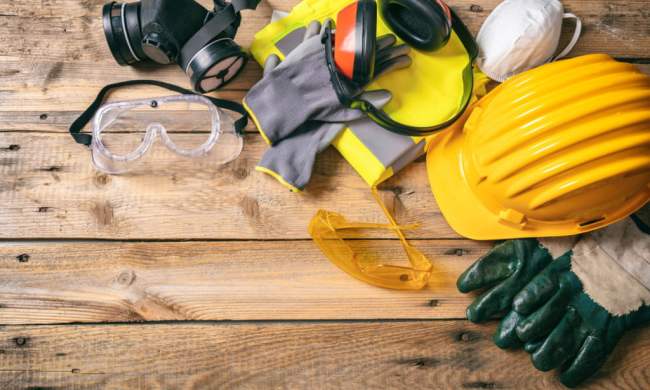Whether you’re a current or aspiring homeowner, construction loans are great tools to help you create the home of your dreams. However, not all homeowner needs are the same. That’s why there are a variety of construction loans available. Although they may sound straightforward, construction loans can be challenging to navigate. There are particular rules and regulations for different types of loans.
How you qualify for a construction loan and the rates associated with these loans vary as well. In this guide, we’ll discuss the different types of construction loans and how they work, how you obtain one, and the typical construction loan rates.

What is a construction loan?
A construction loan is a short-term loan (usually 12-18 months) devoted to building or renovating a home. The length of the loan is short because it coincides with the duration of construction. The interest rates are higher; because, unlike a mortgage, the construction loan isn’t usually backed by the collateral of a home.
A construction loan only covers the cost of the land, contractor labor, building materials, permits, and other costs directly associated with a project. It can include appliances, permanent fixtures, and landscaping, but things like home furnishings are not part of a construction loan.
How do home construction loans work?
Depending on your construction needs, loans can work in a variety of ways. Unlike personal loans, which are one lump sum to the borrower, most construction loans pay out in “draws” to the builder. For a construction loan approval, your contractor needs to provide a building timeline and a detailed cost estimate to the bank.
Construction loan draws pay out by building milestones. For example, a draw may pay out for pouring the foundation or framing the home. Payouts are designed this way to help keep the contractor on pace with their timeline and estimates.
Building contingencies or an additional monetary percentage (usually 10% to 15%) are commonly incorporated into construction loans. This money is a reserve that you tap in case of unforeseen circumstances that increase building costs or if the builder changes their mind about something midway through construction.
A homeowner deciding to spring for a higher-quality roof or nicer cabinets happens frequently. Although they are short-term loans, don’t let that scare you away from getting one. Paying off a loan in the tens to hundreds of thousands of dollars in a year is out of reach for most. To alleviate this, many construction loans convert to a mortgage once construction is complete, or a second mortgage applies to a home to assist in paying off the loan.
What are construction loan interest rates?
The rates associated with construction loans depend on the borrower’s creditworthiness, just as with any loan. However, currently, construction loans typically are around one percentage point higher than traditional mortgage loans. They are usually in the 3% to 5% range.

How to get a construction loan
When attempting to secure a construction loan, doing your due diligence and having everything your lender requires will drastically increase your chances. Here’s what your lender will need from you.
- Work on your credit score. A score of 700 or higher is the norm these days for securing significant loans.
- Get preapproved. Having a preapproval for any loan shows your credit is in good standing, for a loan, at the very least.
- Secure an experienced contractor who’s licensed and insured.
- Have a building estimate and timeline from your contractor ready to go. Other supporting documents, such as the deed, blueprints, and permit requests, are also helpful.
- Save up for the down payment. Most construction loans require a down payment of 20% to 25% of the total loan amount.
- Decrease your debt-to-income-ratio (DTI). Your DTI is another factor outside of your credit score that tells lenders how much cash you typically have on hand to pay off your loan. This is demonstrated by showing proof of income and then that’s compared to the debt shown in your credit report. Lenders usually want a DTI under 45%.
The bottom line
Since lending institutions can structure construction loans in different ways, it’s smart to ask about hidden fees and costs that might arise during your home construction. Depending on your loan type, banks may require various inspections, surveys, and appraisals, which all come with fees that can knock you off your budget. Some loans require building project managers that operate outside of your contractor. These project managers draw inspections to ensure that work is being completed as to the contract terms. These inspections come with fees to the project manager.
Other important things to not overlook before starting a project are city building and zoning codes. Ensure the contractor you hire is knowledgeable of these codes the cost of any permits is included in your loan. Banks and their project managers are not responsible for any unforeseen costs associated with city permits.
Finally, when entering into a construction loan, it’s vital you work with a contractor you feel is reliable and someone you can trust. Other than wanting them to do the job right, you want to make sure they’ll get the work done within the timeframe stated in the terms of the construction loan. Contractors are notorious for pushing the completion dates of a project, and if yours does this, you can potentially rack up late fees from the bank and wind up paying extra interest every month the project is extended.



